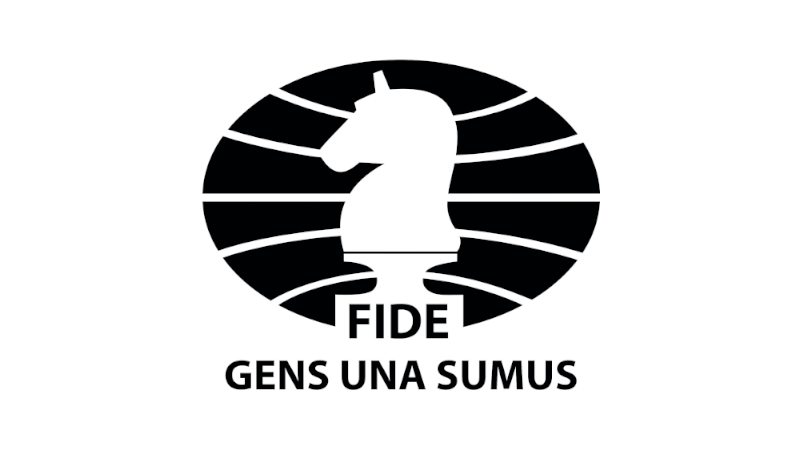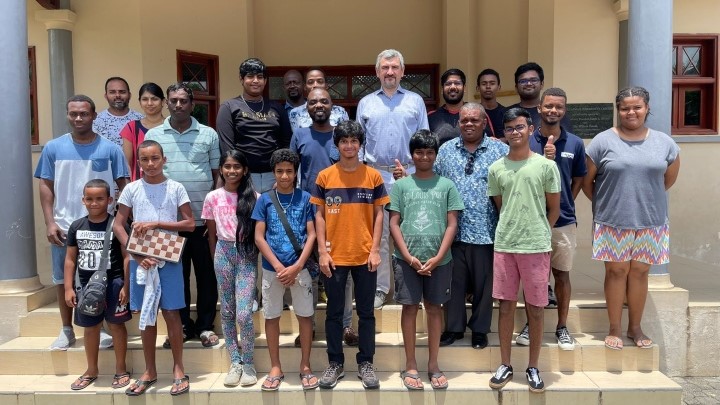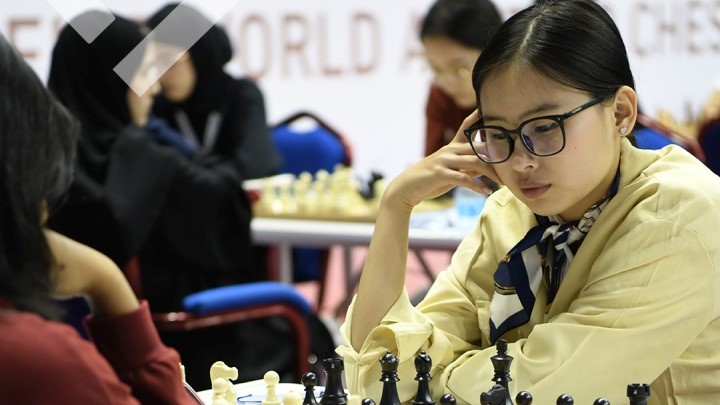The deadline for submitting 2028 Chess Olympiad bid approaching

On August 15, 2023, FIDE opened a bidding procedure for the 2028 Chess Olympiad. As a part of the Olympiad bid, the bidder should also hold the Chess Olympiad for People with Disabilities and FIDE Congress. The first four weeks were allocated to the expression of interest process. Potential bidders could express their interest by 6 p.m. CET on September 12, 2023. During this period, four potential organisers have come forward. As a result, the bidding process will now last 12 weeks, as per the decision of the FIDE Council. Therefore, the deadline to submit bids to office@fide.com is now set for 6 p.m. CET on November 7, 2023, which is eight weeks from September 12. Each bidding application shall be filed per the form provided in Appendix 3 to the Regulations. The Applicant shall attach the following: Letters of support from a national federation and relevant local authorities, Supporting documents (government letters, contracts, bank guarantees, etc.) at the total amount of the bid’s budget. Irrevocable guarantee issued by: a) any of the Top 100 World Banks rated on The Bankers database or another bank which may be agreed with FIDE or b) a verified government guarantee for the amount of three hundred thousand (300,000) Euros to support the bid. Additional documents may be requested by FIDE for further evaluation. The complete requirements from the organiser, including financial obligations, are determined by section 6 of the Regulations. For any relevant clarifications regarding the regulations and application requirements, the applicants are kindly asked to send a written enquiry to office@fide.com The nearest General Assembly shall award the right to host the events to the Applicant with the highest number of votes received. Regulations: Regulations for 2028 Chess Olympiad Regulations for 2028 Chess Olympiad for People with Disabilities FIDE Congress
FIDE Executive Director visits East African counties

In October 2023, the Executive Director of the International Chess Federation Victor Bologan visited Madagascar, Mauritius and Seychelles, where he held several high-level meetings with local authorities and chess officials and gave simuls to enthusiasts of the game. Victor Bologan used these visits as an opportunity to discuss further chess development in the region, reiterating FIDE’s support for teaching chess in schools, social initiatives, professional chess events and increasing the level of chess among the local players. The main topics discussed during the visits also included participation in various online FIDE training programs for players, arbiters and trainers from Africa, the vital necessity of inviting at least one strong player/coach per country to help increase the overall chess level of national teams, youth, and trainers, and many others. At the meetings with local sports officials, the introduction of chess into the 2027 Indian Ocean Games and the African Games 2024 was also discussed. The first stop was Antananarivo, Madagascar, on October 18, where Bologan played a blitz tournament with local players and met the officials of the National Chess Federation. Since the country will host the Zone 4.4 championship in January 2024, the organization of this event was also discussed during the meeting. FIDE Executive Director has also visited an island Nosy Be for a chess simul and a master class for the local club players. The next stop was Mauritius Islands, where Victor Bologan met Secretary General of the Mauritius Olympic Committee Hedley Han, the Honourable Minister of Youth, Sports and Leisure of the country Stephane Toussaint, the President of the Mauritius Chess Federation Hurrynarain Bhowany, its Vice-president Patrick Li Ying and Treasurer Jay Andhin. The agenda of the visits included the discussion of various initiatives on how to promote chess on the island and in the region. Among them was an ambitious project to mix tourism and chess and to organize a circuit that includes Nosy Be (Madagascar), Mauritius and Seychelles, with an open tournament on each island, connecting it with the already existing tournament in Reunion (France). Another idea was to organize a hybrid-rated tournament for the players of the Indian Ocean countries such as Maldives, Seychelles, Comoros, Mauritius, Madagascar, Sri Lanka and Reunion (France). Following the meeting, GM Victor Bologan played simul with the 20 best players from Mauritius at the Cafe Lux, Bagatelle Mall. Gavin Anderson, the reigning Mauritian chess champion, was the only player to avoid defeat and held his game to a draw. On October 29, the FIDE Executive Director visited Seychelles, where he had a meeting with the officials of the Seychelles Olympic and Commonwealth Games Association, where they discussed the possibility of chess inclusion on the list of sports disciplines for the Indian Ocean Island Games (IOIG). After the official part of the visit, Bologan played simul with local chess enthusiasts. When asked about his impressions after the visits and the future of chess in the region, the FIDE Executive Director said: “For such small countries, the level of chess is quite decent, but of course, it can be improved. We have some examples to follow, like Iceland, where they have only 370,000 citizens but as many as seven grandmasters. I know that the federations are working hard to make progress. And the reason I am here is to see how we can help to improve the level of chess.”
A thrilling Round 3 at World Amateur Championship 2023

The third round of the World Amateur Chess Championship 2023 was held in Muscat, Sultan Qaboos Sport Complex, on November 4. The first traditional move was made by Eng Ismail Al Sawafi, Senior Manager of Public Relations and CSR at Oman LNG, the Gold sponsor of the event. The championship is gaining momentum after two rounds, with the top players trying to enhance their positions in all five categories. Some games stretched over five hours as contestants pressed for a win very hard. The Open U-1700 category saw a surprising turn of events when the top-ranked player, Sergei Inyushkin (FIDE), drew against Yemeni player Nawaf Saleh. There were plenty of exciting games, including Mongolian player Turbat Todmunkh’s victory over Paraguay Osmar and Omani Ahmed Al Rahbi’s loss to Shek Daniel of England. Turbat took the lead after the third round with a perfect score, followed by his teammate Munkhbat, Batnyam. In the Open U-2000 category, Finland player Esa Ahlqvist put in an impressive performance against the Indian player Ranjith, R.K., to win his third straight game. Sebastian Emil (FIDE) and Desandhi Dhihansa Gamage of Syria also scored victories to share the lead with Esa Ahlqvist. In the Open U-2300 category, Kazakhstani player Zhuban Bigabylov emerged on top after three rounds, scoring 3/3 alongside his compatriot Abilmansur, Mongolian players Aldar, Burentegsh and Sodbilegt, Naranbold with 3 points each. A highlight in the category was a fascinating duel between Syrian FM Malek Koniahli and Mahindrakar Indrajeet of India. This exciting game saw several nail-biting moments and ended with a draw. In the women’s category under 1700, there were several unexpected outcomes. Baldanjantsan Khuslenzaya, from Mongolia, notched up an impressive win against Arun Aditi of India and is now tied for the lead with her compatriots Bat-Amgalan Anujin and Naranbold Sodgerelt. The Chess Trainers Workshop organized by the Omani Chess Committee organized alongside the championship concluded today after three days of intensive training. Conducted by the International Arbiter / FIDE Trainer Ali Abbas of Syria and Bashir al Qadimi, the coach of the Omani national chess team, the workshop attracted 20 male and female trainers, all eager to enhance their knowledge in chess training. Round 4 of the World Amateur Chess Championship 2023 will start on November 5 at 1:00 p.m. CET. You can watch games live with expert commentaries on the Oman Chess Union YouTube channel. Text: WACC 2023 media team Photos: Entisar Nasser Al-omiiri, Hamed Al-Mabsali, Abduallah Al-Rashdi, Salma Hamood, Salem Al-Salhi FIDE World Amateur Chess Championship 2023 is organized by the Omani Chess Committee together with the International Chess Federation, with the financial support of Gold sponsors: Syool, Apollo Hospitals, Oman LNG. Bank Muscat, Otaxi, Oronamin C Drink as well as Diamond sponsors: Asyad, OMIFCO, and Oman Airport. Official website: https://worldamateur2023.fide.com/ Results and standings: https://worldamateur2023.fide.com/result/ Live games: Open U-2300chess24.com/en/watch/live-tournaments/fide-world-amateur-championship-2023-u2300#live Open U-2000: chess24.com/en/watch/live-tournaments/fide-world-amateur-championship-2023-u2000#live Open U-1700: chess24.com/en/watch/live-tournaments/fide-world-amateur-championship-2023-u1700#live Women U-1700 https://chess24.com/en/watch/live-tournaments/fide-world-amateur-championship-2023-w1700#live Live broadcast (English/Arabic): youtube.com/@Omanchesscommitteeoman
Grand Swiss: A trio of leaders after Round 10; Vaishali qualifies for Candidates

As the fight for the Candidate spots intensified, the players stepped up their efforts. A lot of decisive outcomes on the top boards mean that before the final round, the joint leaders Hikaru Nakamura, Santosh Gujrathi Vidit and Andrey Esipenko have the highest chances of both winning the tournament and securing a ticket to Toronto. In the women’s section, Vaishali R and Anna Muzychuk both won and continue to lead the tournament. The draws by the other players worked ideally for Vaishali, who punched her ticket to the Women’s Candidates with a round to spare. On board one, the all-American derby quickly went into a position with opposite-coloured bishops. They are generally an early sign of a draw, especially if they come out from a forcing line in the opening. In fact, there was a lot under the surface, and the appearances were deceiving. Hikaru Nakamura chose to transpose to the Four Knights Scotch facing Fabiano Caruana’s Petroff Defence. The Petroff was Caruana’s fireproof defence in 2018 when he used it to great effect to win the Candidates tournament and later easily hold against 1.e4 in the World Championship match against Magnus Carlsen. Nakamura’s choice, the Four Knights Scotch, is an often-used drawing line for two reasons: it leads to relatively simple positions that are easy to play; it is incredibly deeply explored, some lines leading to forced draws. However, Nakamura’s strategy in the opening was cunning. It had two layers: if his opponent remembered the most precise way to deal with the opening surprise, then a quick and energy-saving draw would be made. But if his opponent failed to do so, then he would obtain a risk-free pressure with a very likely time advantage to boot. As the game showed, it was the second possibility that happened. The moment that decided the course of the game was after White’s 12.Rd1 Caruana spent some time recalling his lines and went for the simplifying 12…Bxc3 13.bxc3 Qa5. He could have kept the position more complex with 12…Qe7, but perhaps he thought Nakamura didn’t mind a quick draw (see the first possibility explained above)? He may have been right in his assumption, but that required precision later on. As they followed an obscure game played between engines, Caruana committed a mistake that sent the game from a likely possibility number one to a definite possibility number two. The engine playing with the black pieces chose 18…Rab8, while 18…Rac8 and 18…f6 were also good moves. Caruana played 18…h6? and after 19.Bf4, he was already under severe pressure. His appearance at the board showed great concern about the position. After a further mistake with 19…Re7? (19…Rad8 was best, but even that is hanging by a thread after 20.Be5) White was on the verge of winning after 20.Re1, as Black cannot really defend the pawn on e4. Add to this that Hikaru had more than half an hour advantage on the clock, and you see the triumph of Nakamura’s opening preparation. Nakamura started to think at this point, and while he didn’t play the absolutely best move 20.Re1, he did make the second-best move in the position 20.Qe3, a tempting option that introduces ideas like Bxh6. That sacrifice happened later in the game, and coupled with the doubling on the d-file it also gave White a decisive advantage. With only eight minutes for 16 moves and his position on the edge of collapse, Black’s situation was not enviable. White continued with 28.Qh4, and soon enough, the attack on Black’s king forced Black to enter a lost endgame. Black’s rook is hanging, but there is also the threat of Re8 followed by Qg7 mate, so Black was forced to play 31…Qf4, and after the exchange of queens followed by Bg7xf6, White entered a technically winning endgame. Unlike yesterday, Nakamura didn’t allow any chances and won in 40 moves. It was an unusual game between elite players when one of them suffered an opening catastrophe. On the other hand, Nakamura won in an identical fashion against the same opponent in the last round of the Norway Chess last June. On board two Bogdan-Daniel Deac might have been surprised by Vidit Santosh Gujrathi’s choice of the Sicilian after 1.e4. The reasoning is that both players have had an excellent tournament, so as the end draws closer (no pun intended), it makes sense to play more solidly and preserve what has been achieved. White didn’t go for the open Sicilian and chose the Moscow Variation with 3.Bb5, which was met by the most complex reply 3…Nd7, keeping all pieces on the board. Both the Sicilian and the choice of 3…Nd7 indicated Vidit’s aggressive intentions for this game. Curiously enough, the position eventually took the shape of Najdorf. In line with his aggressive mood, Black transferred the knight from c5 via e6 to f4 and then launched a kingside expansion with …g5. This put White under pressure. White could have played the calm 17.Be2, avoiding the attack with …g4, though Black remains the active side. His 17.Bd2?! lost a pawn to the pretty tactic 17…g4! 18.Be2 Bxe4! With the point that 18.Nxe4 N6d5 pesters the white queen as she can no longer protect the bishop on e2. White continued with 19.Nf6, but after 19…Bxf6 Black was a sound pawn up. Vidit gradually improved his position while White dug deeply to resist on the kingside. Time trouble also became a factor. Playing on his last seconds, Deac stirred up trouble on the kingside with 34.h3. Objectively, this isn’t very good, but White didn’t want to just sit and wait while Black was making further progress. After 34…gxh3 35.Qxh5 Nf6 36.Qe2 Rd4 Black was still in control and remained so when they reached the time control. White’s last hope was that perhaps he could round up the pawn on h3 but it was dashed by Vidit’s energetic play. On board three Andrey Esipenko chose his favourite Catalan against Parham Maghsoodloo. Still, it was Black who chose a rare early on with 7…h6. Moving the h-pawn is generally useful for Black, controlling the g5-square and waiting to see how White continues with development. White chose the standard development with 8.Qc2 and 10.Bf4 and Black went down a line

